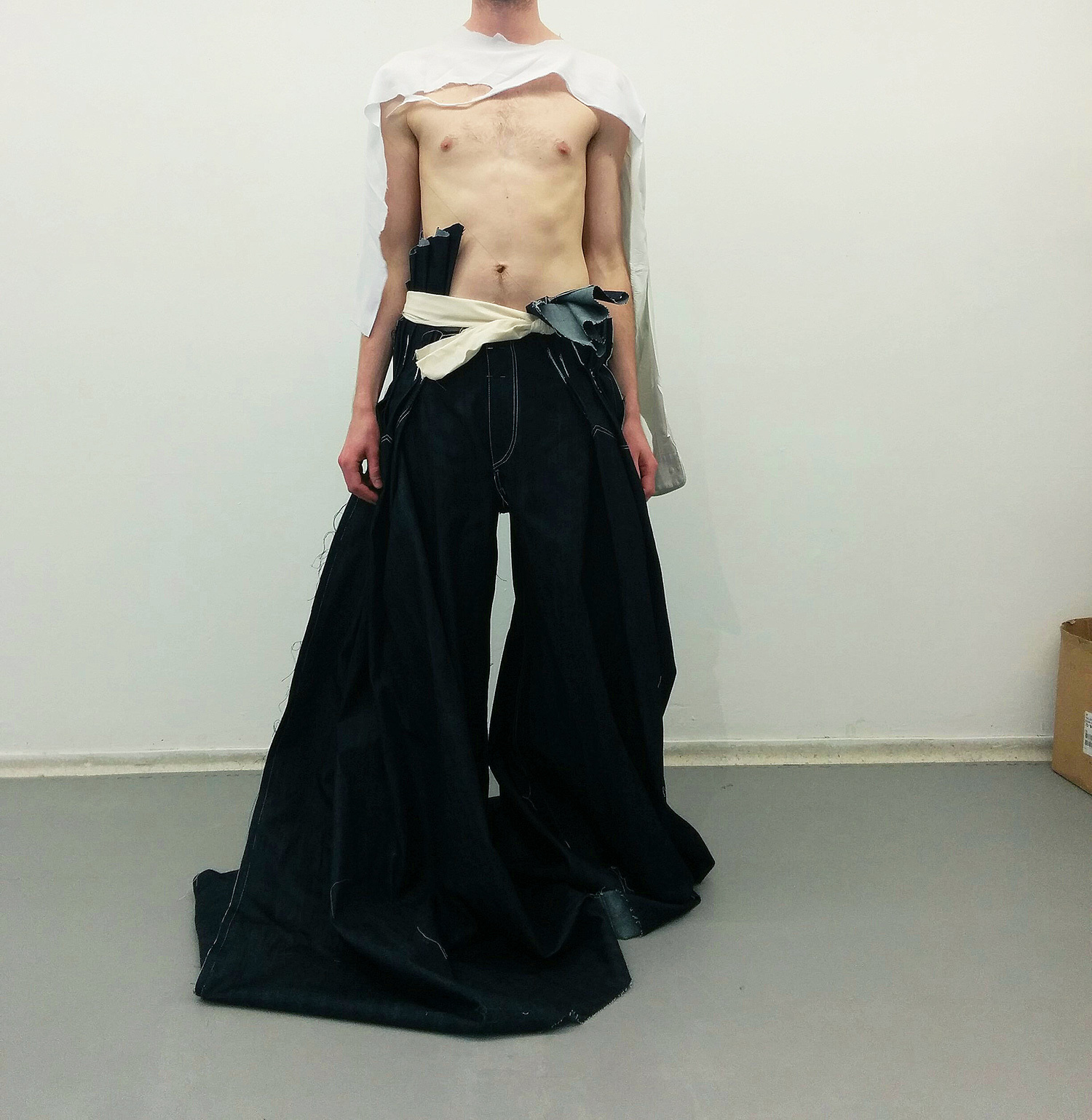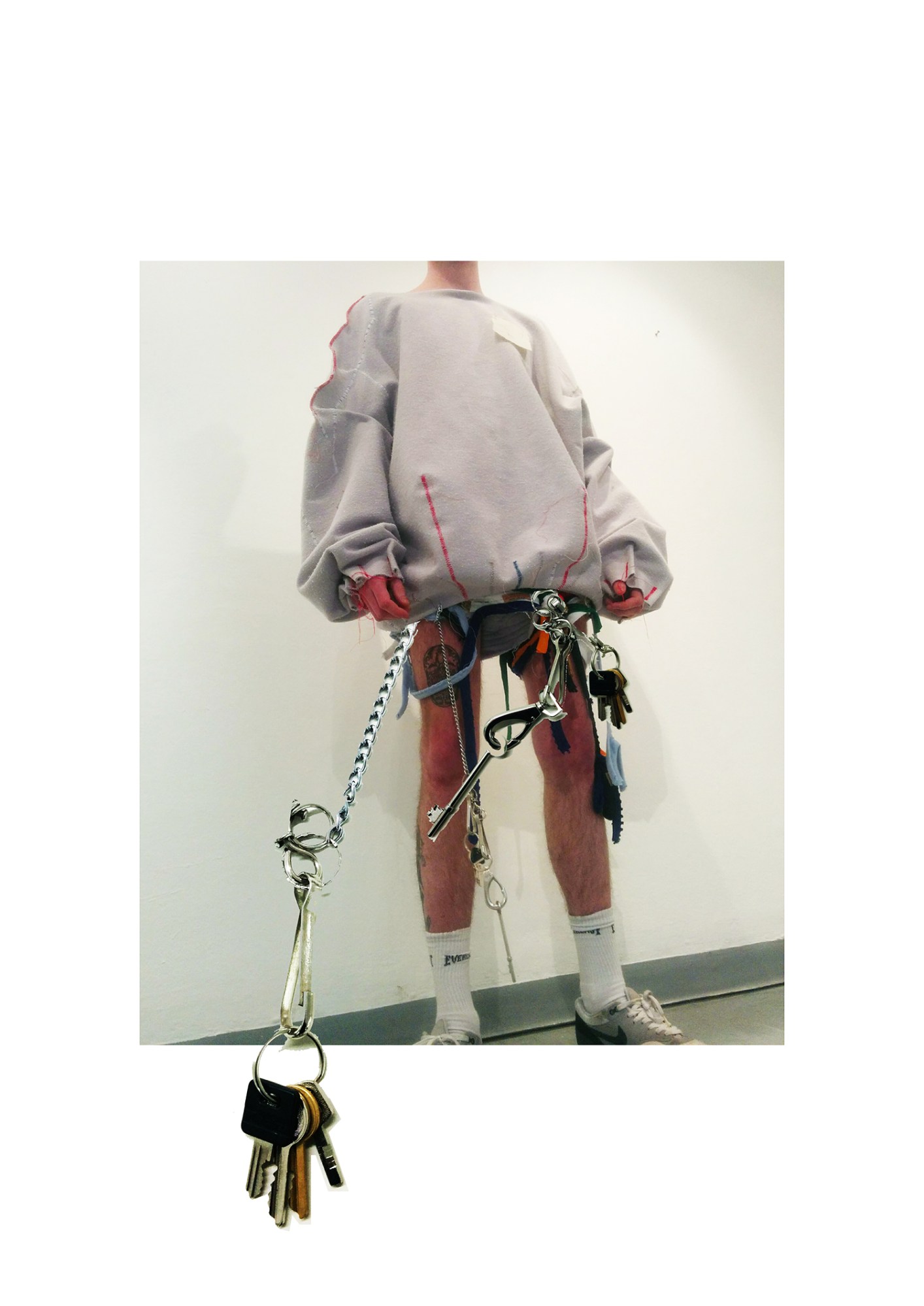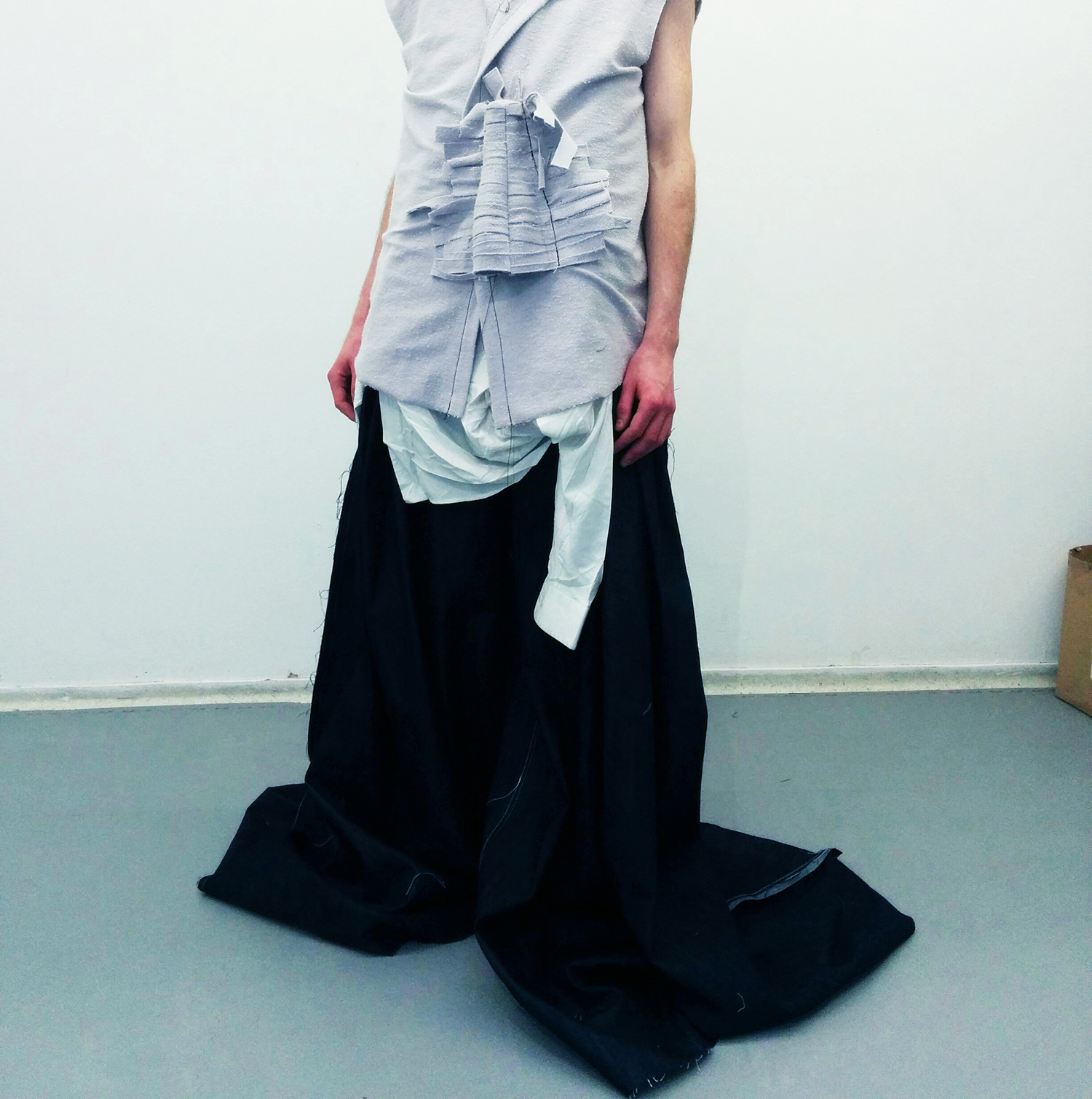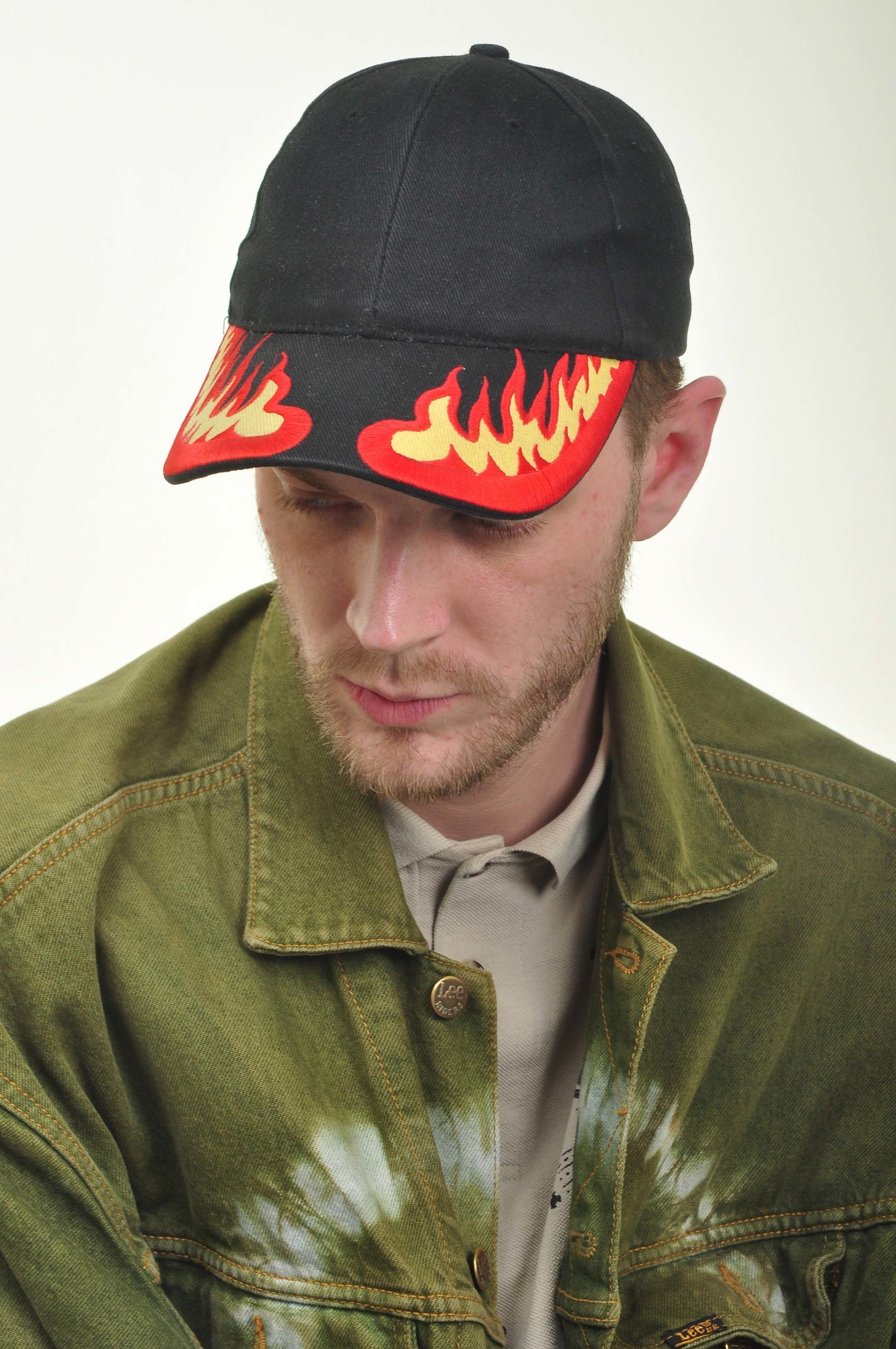After catching the collective eye of Fashion East and TOPMAN while studying at the Royal College of Art, the Swedish-born, London-based designer graduates from his MA mere days before his LC:M debut. Inspired by real-life function and needs, Per’s DIY approach is rooted in enhancing everyday reality. “I like normal things, because they are more valid socially than wearing abstract sculptures – I just want the guy I’m dressing to feel great,” he explains. However, that doesn’t mean he can’t have fun, one of his recent projects, Poetical Functions, hints at a lighter side and demonstrates just how much he’s assimilated to London life, with pockets built into garments to hide bottles of wine on the bus. Here’s what we learnt after grabbing a secret drink on the 55…
1. He’s from a small town in the Swedish province of Småland…
“My home town is a little town in southern Sweden called Vimmerby, but actually I didn’t move there until I was about nine. Originally I come from a village called Björksnäs, consisting of about five houses in the forest, two miles from the town. However the whole region, called Småland, is famous for being the home to Astrid Lindgren (the children’s book author) and the people of Småland have a reputation of being stingy in the rest of Sweden.”
2. He experimented with style from an early age but the arrival of MTV Germany changed everything…
“I have a few early memories of experimenting with style. Growing up in rural Sweden in the early nineties left you solely to play with your imagination. I remember I had this desire for something weird and fucked up to happen, although I did not know what it was, because everything was so quiet. Our neighbours were from Germany and they only lived in their house during the summer, but always brought back loads of presents to us when they came back, and one time they brought a German satellite receiver so German MTV was constantly on as soon as I came back home from school. I used to dress up to go grocery shopping with my parents, and I had colour phases, forcing my mum to dye my hair green or orange and then dressing accordingly monochrome. I remember going to school with painted fingernails once and I was not allowed to stay in the classroom. It was really inventive times back then. Before I properly started looking at fashion designers and learning you could actually work as one, I was so obsessed with how people dressed. I loved my grandmas long skirts and I always said spin grandma! Spin! And her skirt just flowed. I thought it was so amazing. My 6 year older sister was also very experimental in her style. It felt quite controversial dressing up when it’s just forests with few people.”
3. His first design hero was Elsa Schiaparelli…
“Quite weird I know, but I just like that Elsa Schiaparelli didn’t give a fuck and Coco Chanel called her “the artist that makes clothes”. I was also really into Patrik Söderstam and I actually got the opportunity to have him as my tutor during my final project in BA. Ann Sofie Back and Martin Margiela are also designers I hugely admire.

4. He’s interested in real-life function and need…
“During my BA most of the students wanted to get away from the whole ‘Swedish thing’ – that idea of being practical and functional in everything, so most of the work at that time was very much about fantasy. I tried to design like that but it just did not work for me. So I started doing menswear and dressing myself again and it all came quite naturally.
5. He applied to the RCA through peer pressure, took some him time to find his feet but hasn’t stopped learning…
“I applied to the RCA because two of my friends were applying. RCA was extremely tough in the beginning. The old curriculum encouraged you to work in a very regimented way; research, mood board, color palette, all that stuff. I was just miserable and my work was really really bad. It was Zowie Broach who helped me realise that you have to propose something with the clothes you are making. An MA should be about creating knowledge. Experimenting with shape and colour and then fitting it with the right mood boards and research images is something everybody knows, and it works, but you know who cares about that? You really need to live it and believe it I think. There are some amazing people studying fashion here and every day is just really informing and we never really stop talking about all these things.”
6. If the RCA has taught him anything it’s…
“There is always time for a couple of pints.”

7. London life has heightened his senses…
“London is moving very fast so it’s a bit like you have to really sharpen your senses. I think that for me growing up in the forest, I was already used to that, like finding something interesting or beautiful in the smallest things, that is really handy in London. You see stuff all the time.
8. He describes the Per Götesson man as…
“Quite casual and a bit romantic. He does not dress awkward but he dress to look cool and feel good.”
9. As he works on his MA collection, his studio is filled with the sounds of…
“Hugo Massien’s All Night. What can you expect in June? Clothes for people moving, carrying their belongings on their sleeve. The materials are the people I grew up with and the friends I’ve met.”
10. He believe the future of fashion needs you, me and everyone we know…
“It’s not about a person. People are not interested in egos anymore. The system cannot be determined by the aristocrats of fashion, what has happened in the music industry must happen to fashion as well. Fashion needs to reflect more on itself and it needs to be open for everyone. The future is more about collaborative thinking and dialogues between between people who want to buy the stuff and the designers themselves. The people will decide the future of fashion. My advice to anyone wishing to follow in my footsteps? Try not to listen to other people’s opinions too much, be true and don’t spend time on work that does not feel important to you.”

